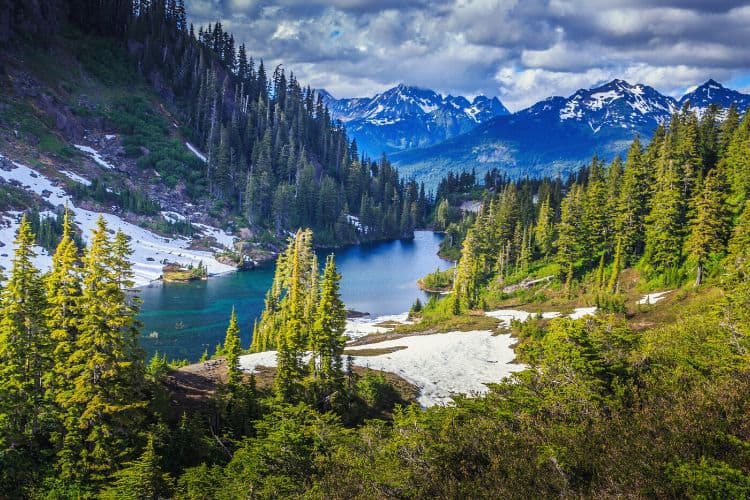Nestled in the rugged and remote wilderness of Montana’s Rocky Mountains, Glacier National Park (GNP) is a paradise for outdoor enthusiasts and nature lovers. With its jagged peaks, pristine glacial lakes, and diverse wildlife, this park offers an unforgettable experience for anyone seeking to immerse themselves in the great outdoors.
While the park boasts breathtaking vistas and scenic drives, it’s the hiking trails that showcase the park’s rugged beauty best. From easy strolls to challenging alpine ascents, there are over 700 miles of trails winding through the park, each offering a unique perspective on the surrounding landscapes.
Whether you’re a seasoned hiker, a first-time camper, or somewhere in between, GNP is an experience you won’t soon forget. Keep reading to learn the best time to go see the park and other useful advice and tips for planning your trip.
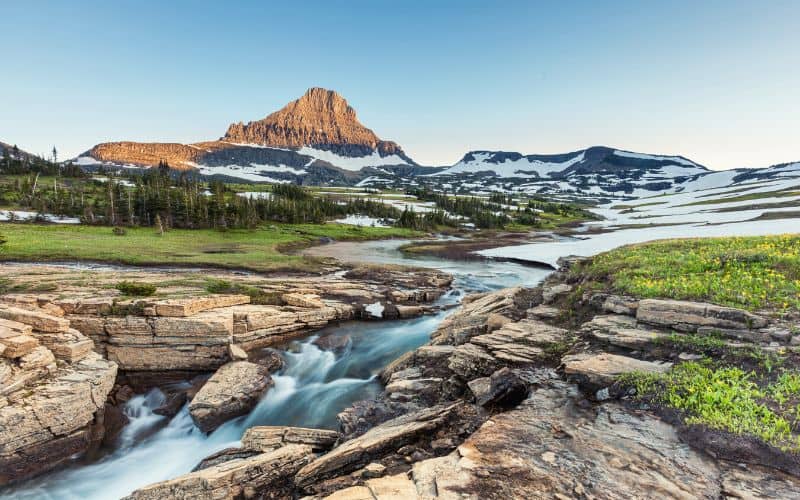
When Is the Best Time to Visit Glacier National Park?
Glacier National Park by Season
Spring
If you’re planning to visit Glacier National Park during the spring, you need to plan ahead and be self-sufficient as services are limited during this season. Most services within and around the park do not reopen until late May or early June, including accommodations.
Roads within GNP need to be cleared of winter snow, a process that can take two to four months. By late May, most roads are open for vehicle travel, except for the Going-to-the-Sun Road over Logan Pass.
While the lower portions of Going-to-the-Sun Road remain open year-round, the entire road doesn’t open until late June or early July. However, during the road-clearing process, the park management may open it to hikers.
Remember that higher-elevation trails in the park may still be dangerous and covered in snow until late June. So, be sure to exercise caution and prepare for winter-like conditions before heading out on a hike!
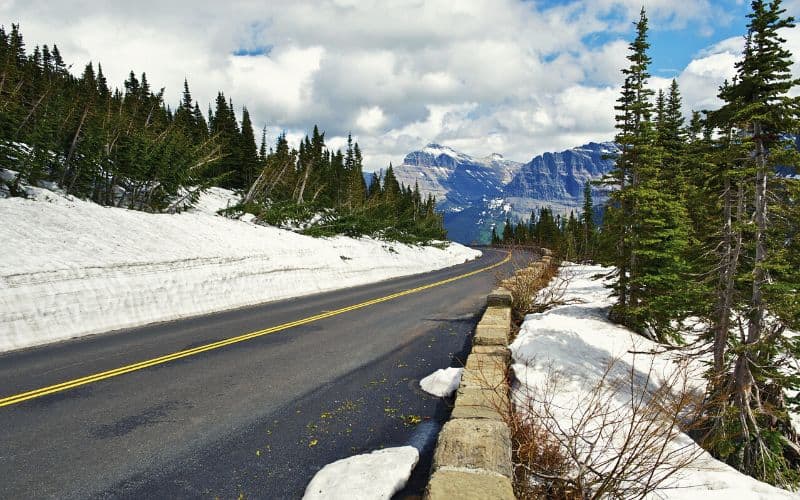
Summer
Over half of Glacier National Park’s annual visitors arrive during the two peak summer months, making this a highly congested period. The trails leading to and from the various glaciers in the park are highly trafficked by hikers during the summer season. If you aren’t a fan of crowds, therefore, this period is best avoided.
Last-minute accommodations are nearly impossible to find. To secure a room or camping spot, it’s a good idea to book at least six months or more in advance.
Despite the crowds, the pleasant weather during summer is definitely a plus. Daytime temperatures usually reach the comfortable 70s and the lows stay above freezing.
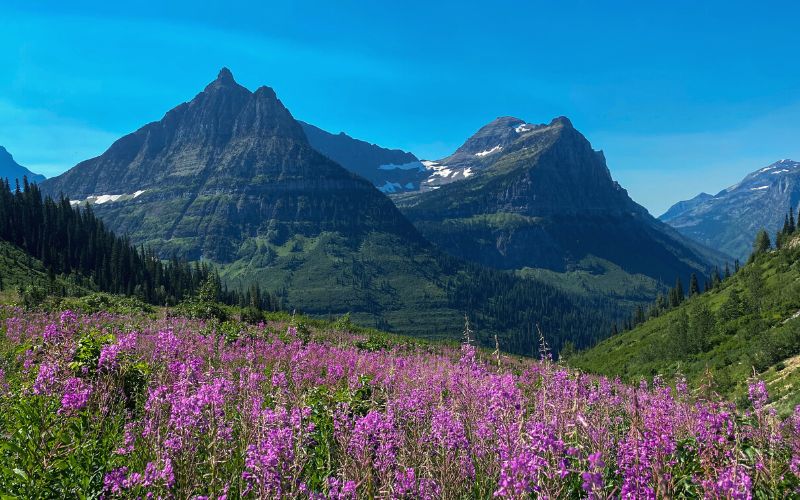
Fall
Autumn is a captivating season to explore Glacier National Park. By mid-September, the trees start changing colors and the western larch that covers the park turns yellow by mid-October. With fewer crowds, wildlife, including bears, are often more active so it wouldn’t hurt to brush up on your bear safety.
It’s worth noting that visitor centers close in late September and early October, although the Apgar Visitor Center restrooms remain open year-round.
September weather averages around 60°F during the day, but can occasionally reach into the mid-70s. The lows in September range from 25–40°F and snowfall is unlikely. The fall weather is generally brisk-to-chilly, with daytime highs in the low-to-mid 50s and nighttime lows in the 30s.
You can expect a significant drop in crowds from August to early September, and even more so in October.
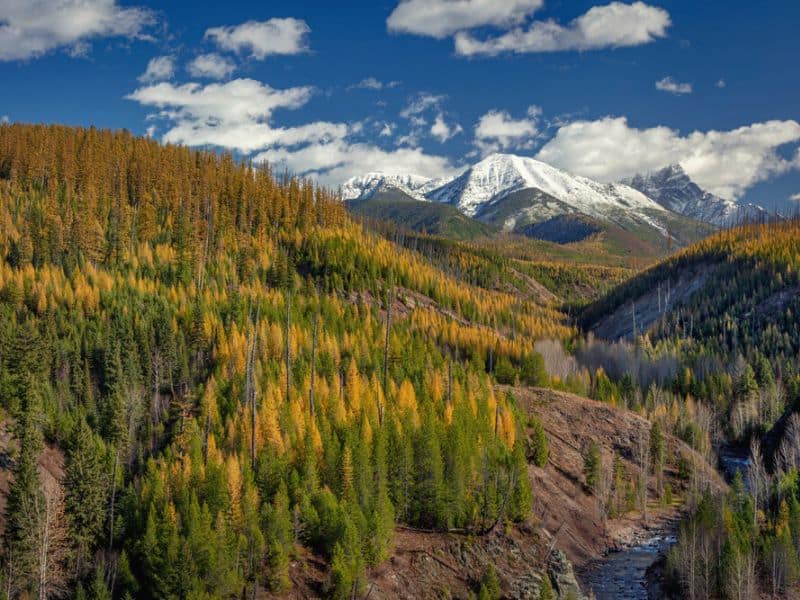
Winter
Many people believe that Glacier National Park is shut down during the winter, but this is not the case! The park is open every day of the year, even during the winter season, which lasts for five months. A portion of the iconic Going-to-the-Sun Road is usually plowed and open year-round
Park services and roads are severely limited during this time and some areas become completely inaccessible due to heavy snowfall. Despite this, GNP becomes a winter wonderland during the winter months where you can enjoy all kinds of winter sports, including skiing, snowshoeing, and ice climbing.
The park’s camping and lodging facilities are, however, greatly reduced during the winter season, with many closing after Labor Day. Some of the accommodations that remain open include Lake McDonald Lodge, Village Inn at Apgar, and Glacier Highland Motel.
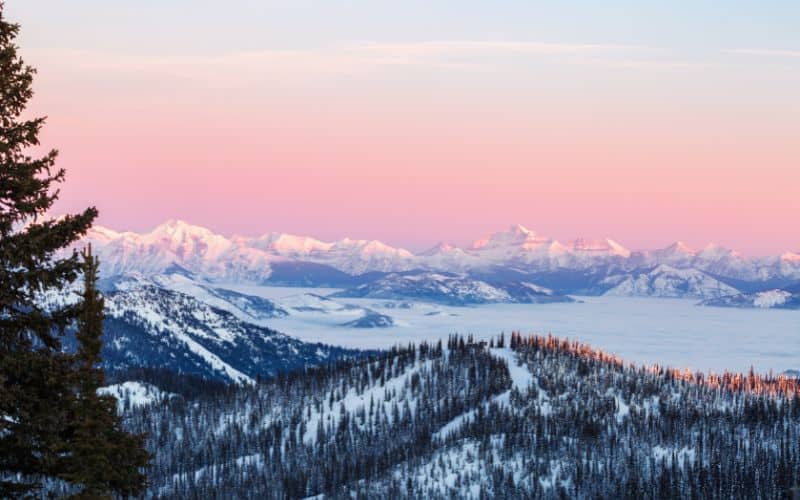
When Should I Visit Glacier National Park to Avoid the Crowds?
Glacier National Park can become quite crowded during peak season. The best way to avoid the crowds is to plan your visit during the park’s off-season, which is typically in the fall and early spring.
September and October are great months to visit. The weather is still mild, the leaves are changing colors, and the crowds are much smaller than in the summer. Most park amenities, like the shuttle service and boat tours, are still operational during this time.
Another option is to visit the park during the winter, when it is much quieter and offers unique activities such as snowshoeing and stargazing.
No matter when you visit, it’s always a good idea to check the park’s website for updated information on trail closures and road conditions.
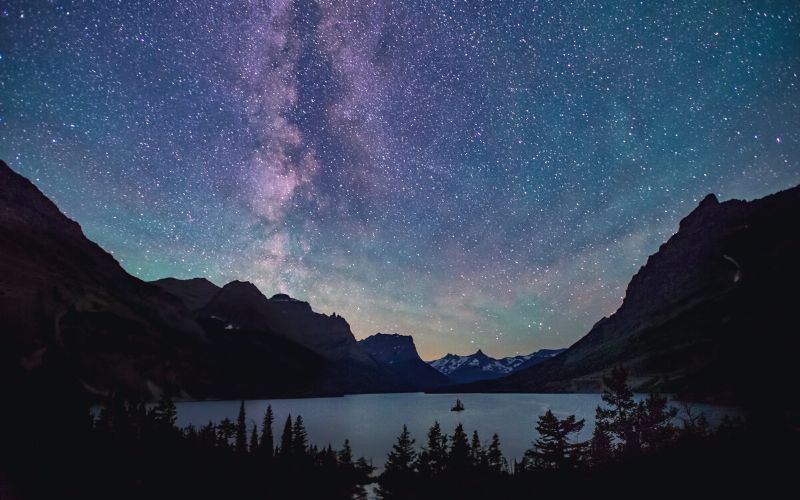
When Is the Best Time to Go Hiking in Glacier National Park?
The best time to go hiking in Glacier National Park is during the summer months from late June to mid-September. During this time, the weather is generally warm and dry, and the park’s hiking trails are mostly free of snow and ice.
The park’s shuttle system operates during this time, which makes it easier to visit trailheads and other important areas of the park. Many of the park’s hiking trails offer stunning panoramas of the park’s many mountains, glaciers, and waterfalls. Late summer season is a beautiful time to enjoy those views.
The park’s hiking trails can still be snow-covered and inaccessible well into June, particularly at higher elevations. While some trails remain open in the fall, they can be impacted by early snowfall and colder temperatures.
Remember that Glacier National Park is bisected by the continental divide giving us two distinct east and west sides. The hiking is spectacular on both sides of the park, but the east side generally has more hiking trails.
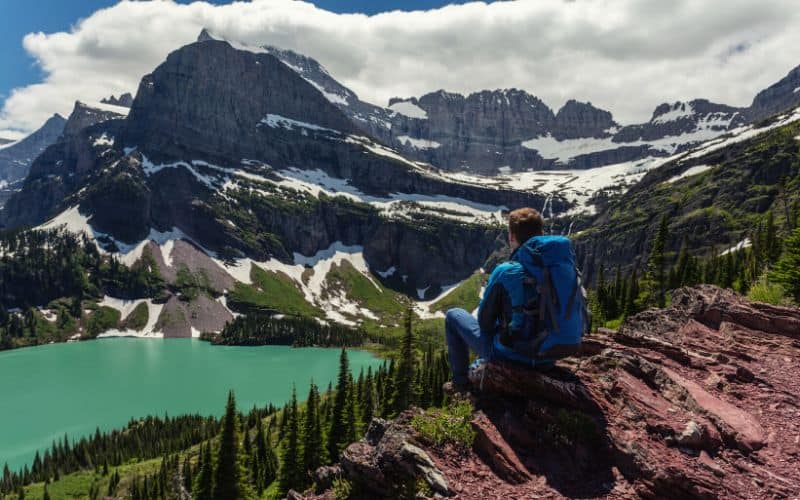
When is the Best Time to Go Camping in Glacier National Park?
The best time to go camping in Glacier National Park is during the summer months, from June to September, when the weather is most favorable for camping in Montana. During this time, all of the park’s campgrounds are open. You can also enjoy a range of outdoor activities, including hiking, lake fishing, and wildlife viewing.
The downside of camping during this time is that it is also the busiest season in the park, and campsites can fill up quickly.
If you’re looking for a quieter camping experience, late spring or early fall can be a good option. May and early June offer the opportunity to experience the park’s stunning wildflowers and waterfalls. September and early October, meanwhile, offer warm weather and fall colors (these are best seen on the park’s more forested west side!).
However, some of the park’s campgrounds may be closed or have limited services during the off-season. As such, it’s always best to check the park’s website for updated information before planning your trip.
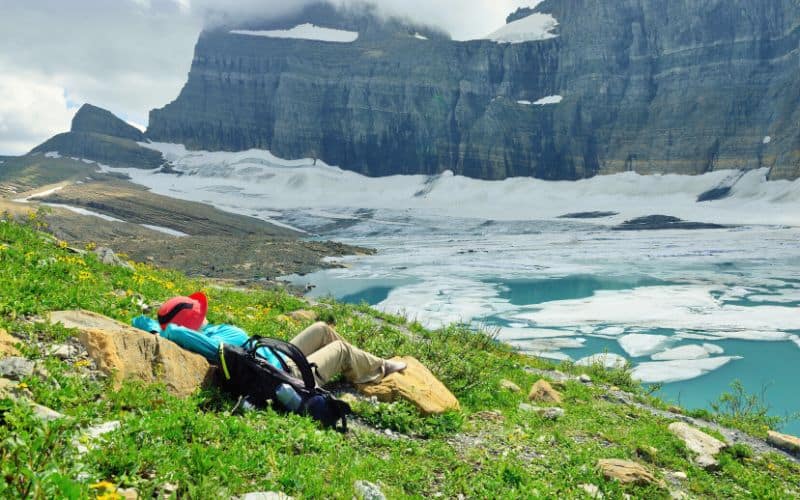
Where is the Best Place to Stay in Glacier National Park?
Glacier National Park offers a wide variety of campgrounds, backcountry campsites, and lodges. The best place to stay in the park depends on your budget, preferences, and the type of experience you are looking for.
For those who enjoy camping, the park has thirteen campgrounds, with seven of them open to reservations and six on a first-come, first-served basis. Many of these campgrounds are nestled in beautiful natural surroundings and are a great way to experience the park’s outdoor recreational activities.
Some of the best campgrounds in the park include Many Glacier Campground, located in the northeastern part of the park, and Apgar Campground, situated on the western side of the park along the beautiful Lake McDonald.
For those looking for a glamping experience, Glacier National Park offers several lodges, cabins, and hotels. Some of the best lodges in the park include Many Glacier Hotel, a historic Swiss-style lodge located on the shores of Swiftcurrent Lake, and Lake McDonald Lodge, a historic lodge situated on the shore of Lake McDonald.
If you want to be near all the park’s best highlights, try the Rising Sun Motor Inn located off Going-to-the-Sun Road. Glacier Park Lodge is another historic accommodation located near the park’s southern entrance.
Outside of the park, the towns of Whitefish, West Glacier, and Kalispell offer additional lodging options, as well as a range of restaurants, shops, and other attractions.
Ultimately, the best place to stay in Glacier National Park depends on your preferences and budget. It’s always a good idea to research your options and make reservations in advance, particularly during the park’s peak season.
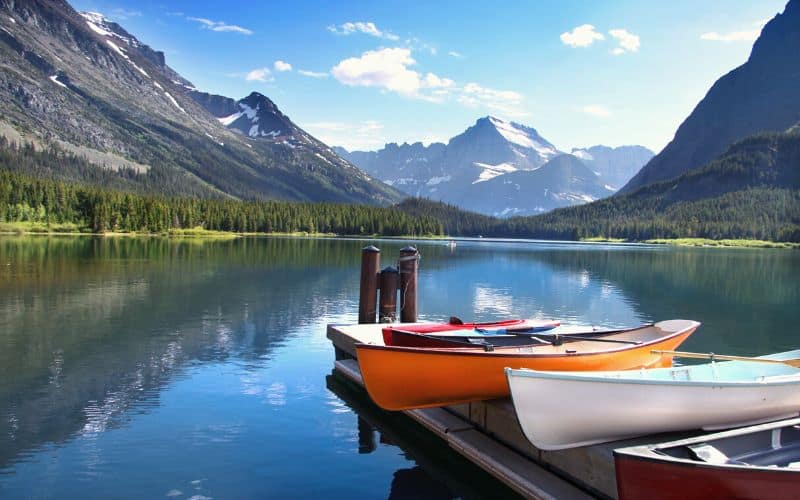
Things To Do At Glacier National Park
Hiking
Glacier National Park offers some of the most scenic and varied hiking experiences in the country. From easy nature walks to challenging mountain summits, the park’s over 700 miles of trails offer something for hikers of all experience levels.
For those looking for a more extended hiking adventure, backcountry camping permits are available for many of the park’s remote campsites. A permit can be obtained through the park’s website or at a ranger station. Remember to obtain the necessary permits and bear-resistant food canisters before setting off.
Since weather conditions vary greatly from season to season, it’s essential to plan ahead and be prepared for rapidly changing weather conditions. Be sure to check the park’s current conditions before setting out on a hike.
Here are some of our favorite hiking trails in Glacier National Park:
- Highline Trail: This trail is a favorite among visitors for its incredible views of the surrounding mountains and glaciers. It’s an 11.6-mile trail that starts at Logan Pass and ends at the Granite Park Chalet.
- Grinnell Glacier Trail: This 7.6-mile trail is a challenging but rewarding hike that takes you to one of the most beautiful glaciers in the park. The trail starts at the Many Glacier Hotel and winds its way up to the glacier.
- Iceberg Lake Trail: This 9.7-mile trail is a moderate hike that takes you through forests, meadows, and past waterfalls before ending at the incredible Iceberg Lake. Along the way, you can see wildlife like mountain goats and bighorn sheep.
- Hidden Lake Trail: This 3-mile trail is a popular and easy hike that starts at Logan Pass and takes you to a stunning alpine lake. Along the way, you can see wildflowers, mountain goats, and maybe even mountain lions (hopefully from a distance!)
- Swiftcurrent Pass Trail: This 7.6-mile trail is a strenuous but scenic hike that takes you through alpine meadows and up to Swiftcurrent Pass. From the pass, you will enjoy amazing views of the surrounding peaks and lakes.
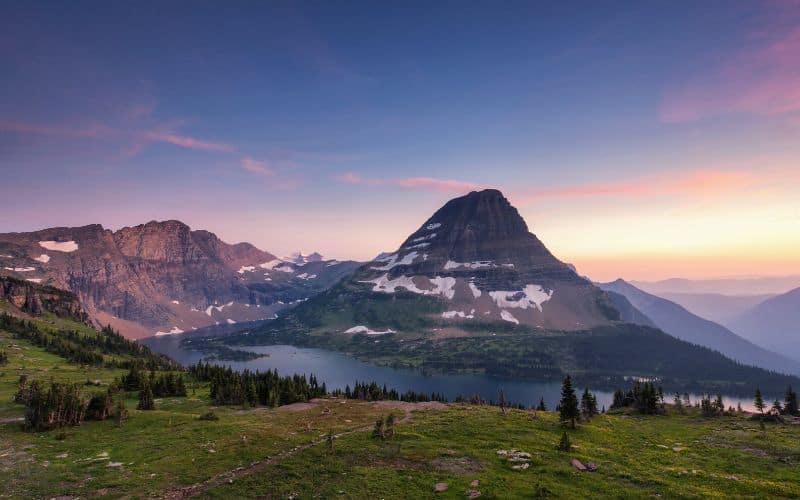
Camping
Camping in Glacier National Park is a fantastic way to experience the park’s natural beauty up close and immerse yourself in the great outdoors. With over a dozen campgrounds to choose from, you can find the perfect spot to pitch your tent, park your RV, or rent a cabin.
One unique camping experience in Glacier National Park is backcountry camping, which allows visitors to truly get away from the crowds and immerse themselves in the park’s wilderness. There are over 700 miles of trails with many backcountry campsites to choose from, so you can tailor your trip to your desired level of solitude.
Another unique camping option in Glacier National Park is the historic Granite Park Chalet, which offers a rustic, backcountry lodging experience. Located high up in the park’s alpine region, the chalet is only accessible via a hike or horseback ride and offers stunning views of the surrounding peaks and glaciers.
Whether you’re looking for a traditional campground experience or a more unique backcountry adventure, Glacier National Park has plenty of options for camping. Just be sure to come prepared with proper gear, food, and knowledge of the park’s rules and regulations for camping.
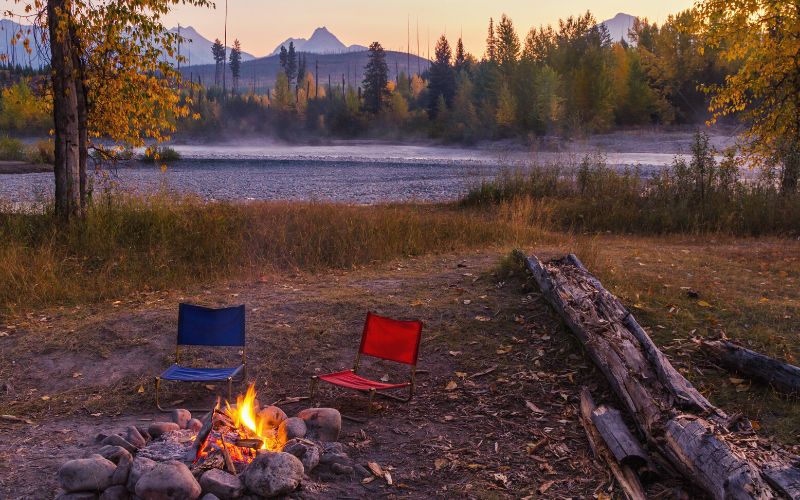
Cross-Country Skiing
Cross-country skiing in Glacier National Park is a fantastic way to experience the park’s spectacular winter landscapes. With over 100 miles of groomed ski trails and countless unmarked routes, you can explore the park’s snow-covered wilderness at your own pace.
The park’s varied terrain offers trails for all skill levels, from leisurely routes along the valley floor to more challenging trails with steep climbs and descents. Along the way, you’ll enjoy breathtaking views of snow-covered peaks, frozen lakes, and frosted forests.
With its quiet, peaceful surroundings and the opportunity to spot wildlife such as deer, elk, and coyotes, cross-country skiing in Glacier National Park is a winter activity that should not be missed! Cross-country ski tours are also available throughout the winter season.
Photography
If you’re into photography, GNP is going to be a dream come true! With awe-inspiring landscapes and stunning natural beauty at every turn, there’s nowhere better to capture unforgettable photos.
The park’s soaring peaks, crystalline lakes, and abundant wildlife offer endless opportunities for capturing striking images. From sunrise to sunset, the changing light conditions offer a range of moods and atmospheres, making for varied and interesting shots.
Whether you’re an experienced professional or a beginner, the park offers ample opportunities to practice landscape, wildlife, and astrophotography. The National Park Service even offers some helpful photo tips to help you land the perfect shot.
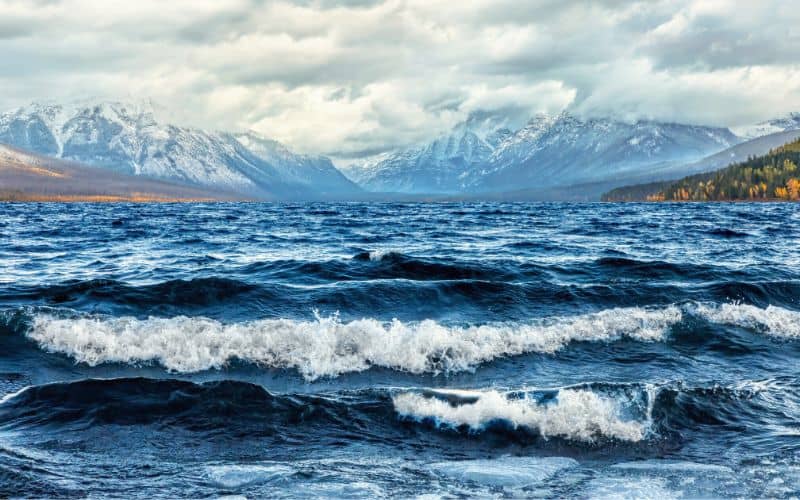
Wildlife Viewing
Glacier National Park is a wildlife enthusiast’s paradise, offering opportunities to observe an abundance of wild animals in their natural habitats. From grizzly bears to tiny pygmy shrews, visit the park and you can experience the thrill of encountering some of North America’s most iconic wildlife!
Along the park’s many hiking trails, you can catch glimpses of elusive creatures such as lynx and wolverines. If you prefer a more leisurely experience, take a scenic drive along the Going-to-the-Sun Road where you can spot wildlife along the way.
Keep in mind that Glacier National Park is in bear country, so always practice bear safety, carry bear spray, and know how to use it.
See the Northern Lights!
Seeing the northern lights is an incredible and unforgettable experience. Glacier National Park is one of the few places in the lower 48 states where you can witness this stunning natural phenomenon.
On clear nights from late August to early April, you might be lucky enough to see the aurora borealis dance across the night sky. With its remote location and minimal light pollution, the park offers a prime viewing spot for the northern lights.
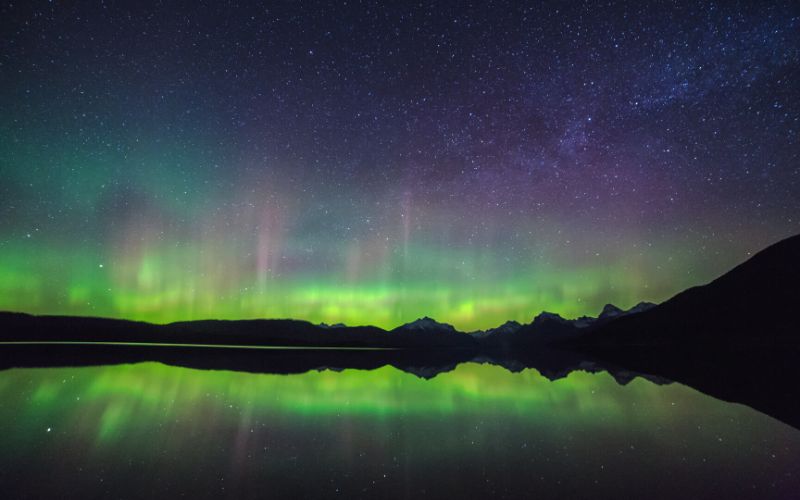
Wrapping Up
A trip to Glacier National Park is a unique and unforgettable experience that offers something for everyone, whether you’re an avid outdoors enthusiast or just looking for a peaceful escape in a stunning natural setting.
So, when is the best time to take in the sights and sounds of Glacier National Park? Late summer and early fall are perfect for hiking and camping, but the park is crowded and accommodations are hard to find.
In spring and winter, you’ll enjoy more solitude, but you’ll have to contend with winter conditions, trail closures, and the park’s services being reduced.
Regardless of when you visit, Glacier National Park promises to be a breathtaking and unforgettable destination for outdoor enthusiasts.
Have you been to GNP or are you dying to go for the first time? Let us know in the comments below! And if you have any questions, be sure to ask and we’ll do our best to answer them!
